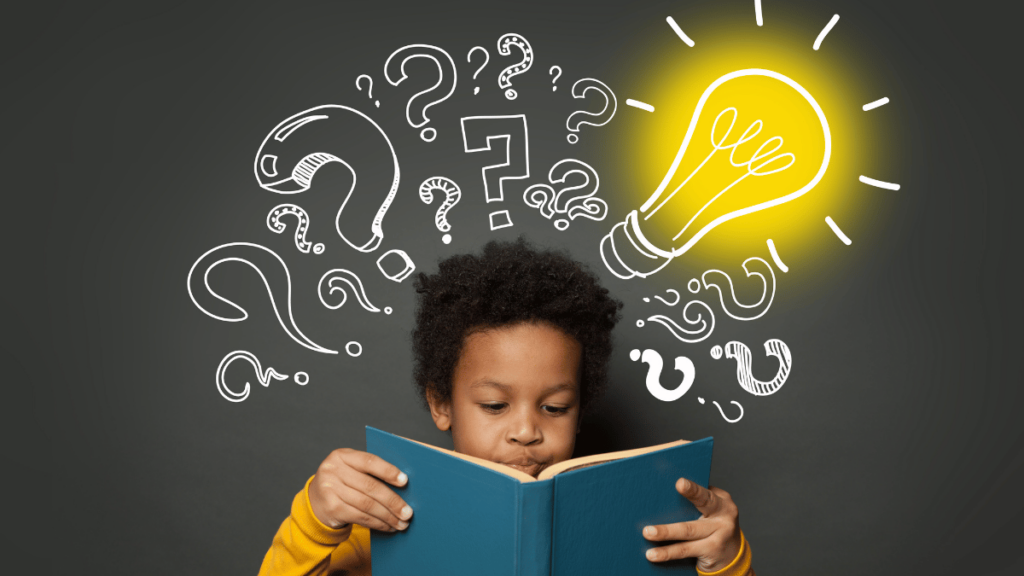Growing Readers: Learning to Love Reading and Writing Column 43
This editorial article was written by Lizzie Mussoline, M. Ed.
How can we encourage lifelong readers and build literacy skills at home?
The Children’s Book Review
Did you know that there are some easy, simple ways to prepare your kiddo to become a lifelong reader—before they even start Kindergarten? But don’t fret; even if they already have started school, these tips help boost all levels of literacy.
The art of learning to read is incredibly complicated when you really dissect it. Kiddos need to be able to identify letters, then they need to know the sounds the letter makes, and then their brain needs to blend a combination of sounds together to decode just one word. THEN their brain needs to think about what the word means. Wow! That is a lot of work!
Keep reading for tips to help make the transition to reading a smooth one.

How Can We Encourage Lifelong Readers?
There are six skills every child needs in order to prepare for learning to read. Here they are followed by a few tips to help build this skill at home:
Letter Knowledge
What is letter knowledge? How do you develop letter knowledge?
Building letter knowledge involves letter recognition, letter naming, letter-sound knowledge, and letter writing. This may seem overwhelming, but having a fun visual aid in your home or your child’s room for easy reference is a great way to introduce and build on this concept. You could pick a letter and make an effort to notice it in the real world, like at the store, on signs while you’re driving, and so on. Just the simple act of starting to talk a lot about letters will help start to build this important skill.
Print Awareness
How do you build print awareness?
Expose your kiddo to lots of books! Teach them the basics, such as how to hold a book and how the pages (and words when they are ready) go in order from left to right. If you have been following this column for some time, you know that one of the simplest and best ways to build these early literacy skills is to put books all over your home for easy reference and access. We love to visit our local library weekly and strategically place books all over our home—this accessibility always piques kiddos’ interests.
Print Motivation
What is print motivation? How do develop print motivation?
All of these early literacy skills are connected, but this one works hand in hand with print awareness. Your child’s interest in wanting to read and gravitate toward books is what this motivation component entails. Basically, helping your child to want to read and want to learn how to read. Having your child “catch” the other people in their home reading really helps. I always think of the quote: “Children are made readers in the laps of their parents” by Emilie Buchwald. The more we read to our children and expose them to various books, the more motivated readers they will become.
Narrative Skills
What are narrative skills? Why are examples of narrative skills? How do we build narrative skills?
Basically, narrative skills are the ability to talk about books. What is happening in the story? Who are the characters? What is your favorite part? Help your child build this skill by talking about the books before, during, and after reading, at the dinner table, and so on.
Vocabulary
How can you improve your child’s vocabulary?
Help your child to learn new and interesting words. When you are exposing your child to various books, and you come upon difficult and or interesting words in reading, explain what the words are and discuss them. Keep a kid-friendly dictionary on hand. Perhaps you’ve heard of the “Word Gap”? Basically, exposure to books in early childhood is directly linked to word acquisition and more. (Learn more about it here).
Phonological Awareness
Don’t let this word intimidate you. This skill is all about sounds as well as playing with and manipulating them. Choose a word, whether in print or in a discussion and talk about the beginning sound, then add in identifying the last sound and middle sound. Help to manipulate sounds by swapping the beginning sound or ending sound. Have fun with rhyming and singing. Rhymes help children understand that sounds in our language have meaning and follow certain patterns. Engage in songs and nursery rhymes together and emphasize the rhyming words to highlight the different sounds in each word.
Be sure to check out our list of Poetry and Rhyming books!
Organizations Helping You Raise Lifelong Readers
As you can see, access and exposure to books are essential to help raise lifelong readers. From an equity standpoint, this can be challenging. So, we wanted to highlight a few organizations helping to make access to books easier and more equitable.
Dolly Parton’s Imagination Library
Inspired by her father’s inability to read and write, Dolly started the Imagination Library in 1995 to serve the children of her hometown in Sevier County, Tennessee. Today, her program gifts over 2.4 million free, high-quality, age-appropriate books each month to children around the world. There is never a charge to families who participate in the program, and it is open to all children under the age of five in geographic areas with operating programs.
The funding is shared by Dolly Parton and thousands of local community partners in the United States, Canada, the United Kingdom, Australia, and the Republic of Ireland. Did you know that 1 in 10 children in the United States receives Imagination Library books? Incredible! You can learn more about this incredible program here. If this is not a resource you or your family personally need, do your part by helping to spread the word!
Book Give
BookGive is a Denver, CO, book charity that sparks a lifelong love of reading by fueling the community with free books. BookGive distributes new and gently used books from their service station to individuals, schools, and nonprofits throughout metro Denver. Learn more about this awesome nonprofit here.
Thank you for reading the Growing Readers: Learning to Love Reading and Writing column. Bookmark this Growing Readers Column link or subscribe to our e-newsletter so you do not miss out on the monthly reading tips. What Is Social Emotional Learning and Why Is It Important? was written by Lizzie Mussoline, M. Ed. Follow her on Instagram: @wildflower_learning_denver.

